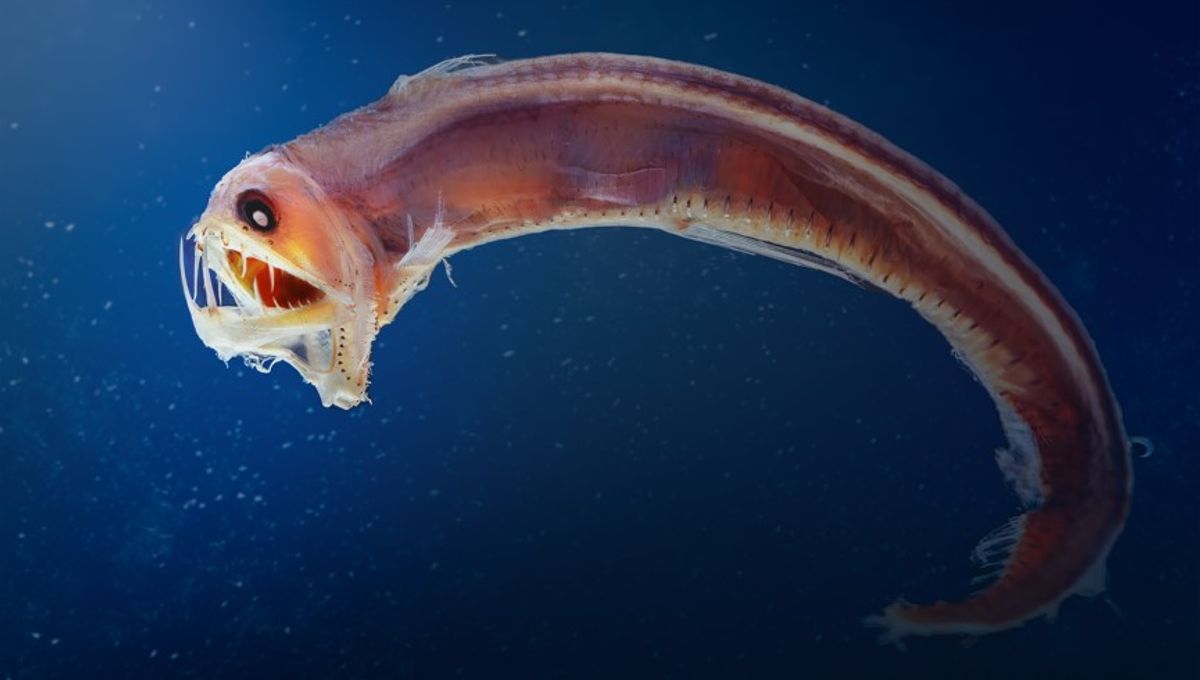
The hadal zone isn’t named after Hades – the Greek god of the underworld – for nothing. Starting 6,000 meters (20,000 feet) beneath the waves, this murky deep-sea environment is one of the deadliest habitats on Earth, with pressure levels that would crush a human body in an instant. And yet, an abundance of animals seem to exist rather happily down there.
The rest of this article is behind a paywall. Please sign in or subscribe to access the full content.
Down at the bottom of the Mariana Trench, for instance, you can practically hear the snailfish laughing in the face of Hades himself as they shrug off 1,100 atmospheres of pressure without breaking a sweat. By contrast, humans are designed to exist in just one atmosphere of pressure, which is why we feel so comfortable at sea level.
One major difference between us and snailfish, however, is that we have air in our bodies while they don’t. Under the extreme pressure of the deep sea, the air pockets in our lungs, sinuses and ears would get crushed, yet the creatures of the hadal zone are composed mostly of water and jelly-like material, which means they’re able to maintain a balanced pressure gradient with their surroundings.
However, at the kinds of depths we’re talking about, even water itself can buckle under the weight of all the water above – as weird as that sounds. Under normal conditions, water molecules form bonds that allow them to arrange themselves in a tetrahedral-like network, yet intense pressure can destabilize these bonds and warp this structure, potentially disrupting vital biological processes.
To counteract this, most fish rely on a molecule called trimethylamine N-oxide (TMAO), which strengthens and stabilizes these hydrogen bonds and prevents the water inside aquatic bodies from becoming distorted. In addition, TMAO helps to protect and strengthen proteins and enzymes, helping them withstand the immense pressure of the deep ocean.
Studies have shown that TMAO levels in different marine species tend to correlate with the depth at which they live, with those residing in the hadal zone possessing the highest concentrations of this life-saving molecule. Other compounds called piezolytes, meanwhile, are thought to help strengthen cellular membranes and protect them from crumbling at deep-sea pressures.
According to research published earlier this year, the majority of fish living below 3,000 meters (10,000 feet) also possess a genetic mutation to a gene called rft1. It’s unclear exactly how this helps, although the altered gene is thought to enhance the transcriptional efficiency of genetic material, which is likely to bring a host of benefits for creatures in high-pressure environments.
All of these adaptations combined help certain species of fish remain in their element in the deep ocean, and it’s only when these creatures are dragged up to the surface that they start to run into problems due to the lack of pressure. This reluctance to rise up the water table is perhaps best represented by the plight of the blobfish, which adopts its famously miserable countenance only when removed from the depths.
Source Link: If Deep-Sea Pressure Can Crush A Human Body, How Do Deep-Sea Creatures Not Implode?